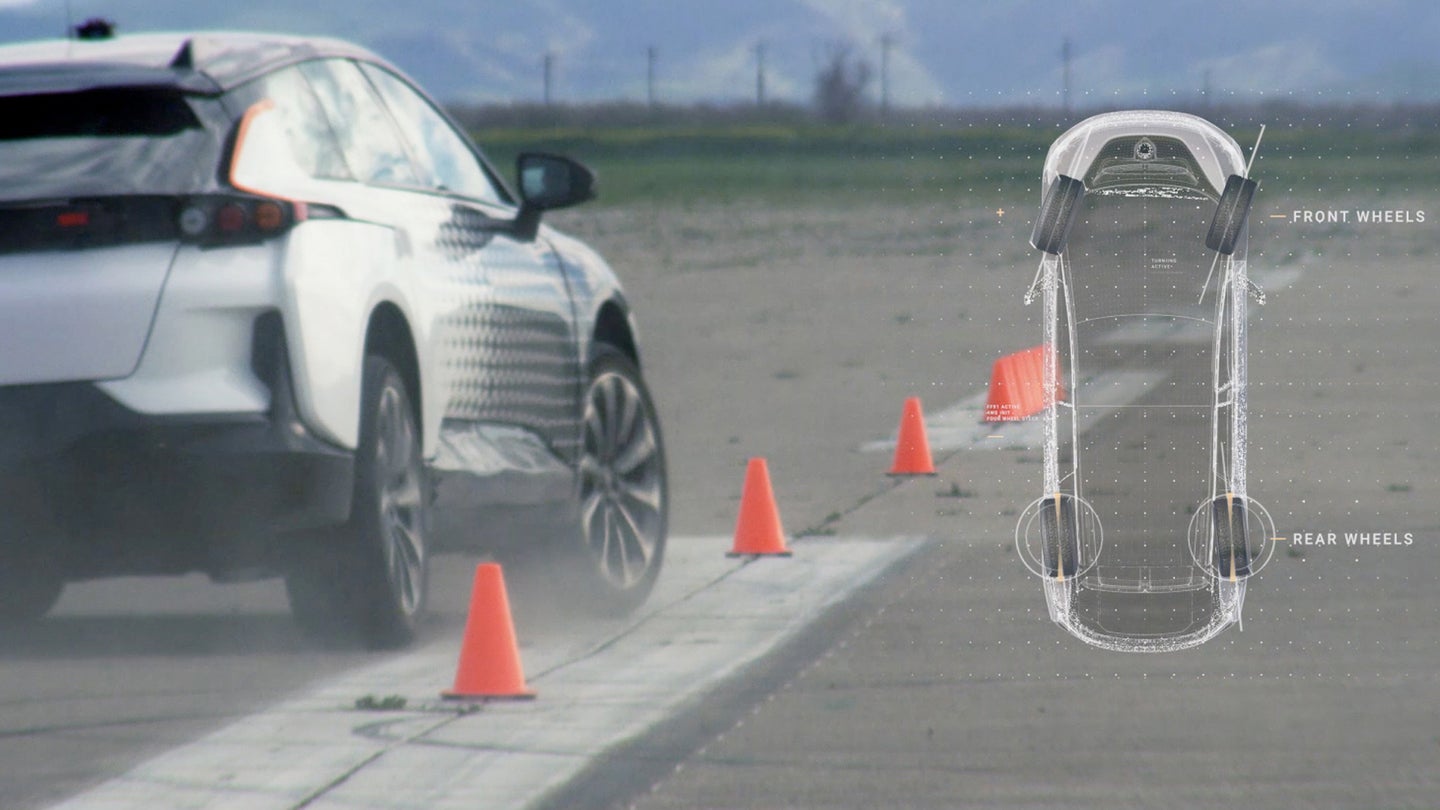Faraday Future to Take on Tesla for Pikes Peak Electric Car Record
Two California-based EVs will climb Pikes Peak this month, but just one will leave as record holder.

The Pikes Peak hill climb, affectionately known as the "Race to the Clouds," is an exhilarating motorsport event that takes place in the mountainous region of Colorado. Drivers participate in a 12.4-mile climb to the summit, starting at 9,390 feet in elevation and ending their trek at more than 14,000 feet. The tradition started when the first race took place over a century ago in 1916; now, the mountain will host the 95th iteration of the Pikes Peak International Hill Climb this year. But with both cars and technology rapidly advancing, certain aspect of the race have become much different than that first climb.
While slamming gears and mashing brakes up an average 7 percent grade, cars might seem like they have a little less pep the higher they climb in the course, and it's not because of heat soak. As the car climbs higher in altitude, the air becomes thinner and less dense. Although the level of "room air" oxygen remains the same at 21 percent, these molecules are spread further apart and become less pressurized. Without some form of forced induction, vehicles lose roughly 3 percent of power for every 1,000 feet above sea-level.
In fact, horsepower loss can be equivocal to a mathematical equation: (Elevation in Feet / 1000) * (Normal horsepower * 0.03)
So for a 300-horsepower naturally-aspirated car at the 14,000 foot summit of Pikes Peak, the overall horsepower loss would be around 126, leaving only 174 ponies to propel the vehicle.
All of this is negated when it comes to an electric vehicle, however. Since power is produced from energy stored in cells rather than relying on the combustion process, the car's power output remains the same regardless of altitude.
Last year, a Tesla set the record for quickest "Electric Production" car with driver Blake Fuller behind the wheel of a Model S P90D. The overall time for the climb was 11 minutes and 48 seconds, only about eighteen seconds slower than a 2016 Porsche Cayman GT4 Club Sport. Take a look at the record setting lap in the video below.

Of course, California-based electric vehicle startup Faraday wants to get in on the action. This year, it's bringing its luxury SUV, the FF 91, to the climb. Reportedly accelerating from 0-60 in just 2.39 seconds, the FF 91 is a tenth of a second faster than Tesla's P100D in ludicrous mode.
Not only does Faraday see this as an opportunity for some good press, but also a chance to test the vehicle's real-world capabilities, claims Nick Sampson, senior vice president of R&D at Faraday, "The hill climb on Pikes serves as the ideal setting to further develop the electric propulsion system and supporting thermal systems of FF 91," he said.
Faraday will be producing a series of videos on its vehicles, beginning with the one shown below:

With electric vehicles becoming more popular than ever on the road and with manufacturers, it's only a matter of time before it does the same with motorsports. Each party is set to prove that their company or brand of choice can outlast or out perform another, and it just makes things a little more interesting. After all, a little competition always helps to move progress along.
